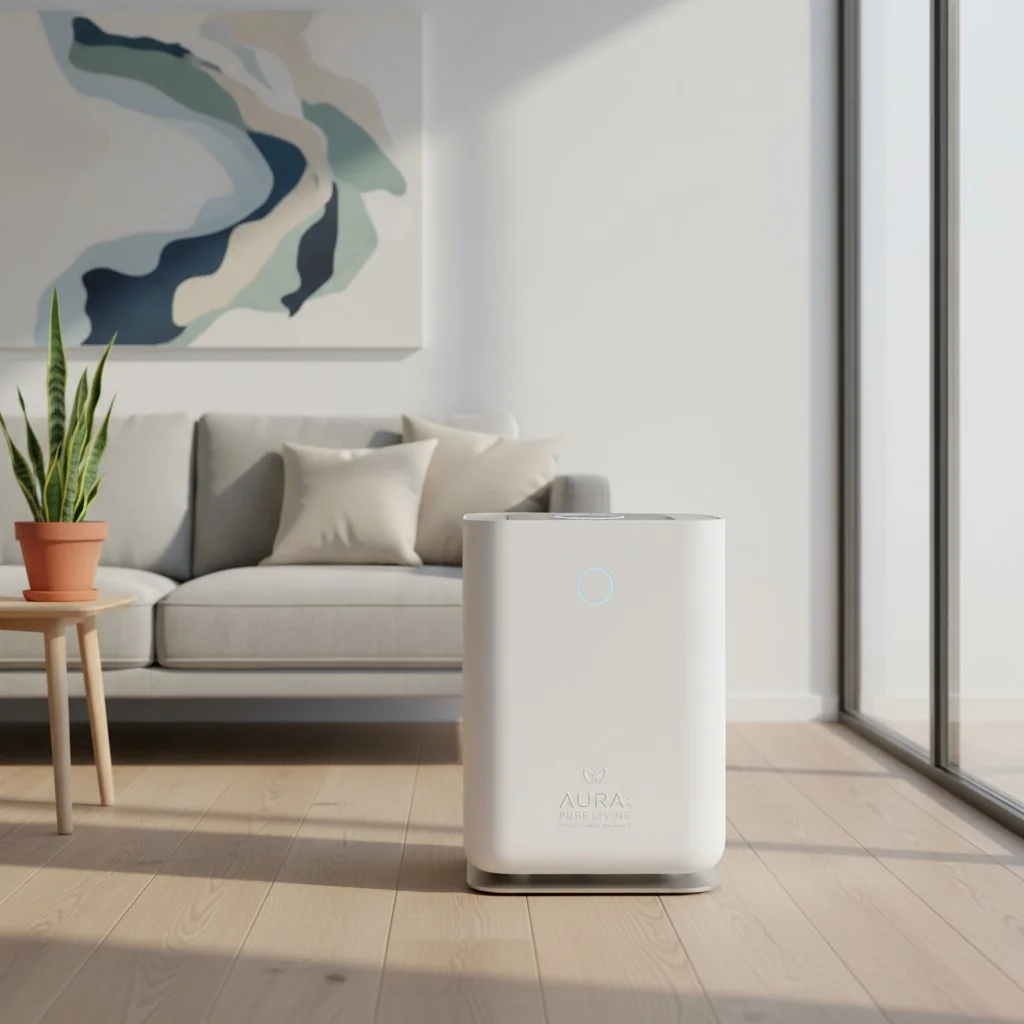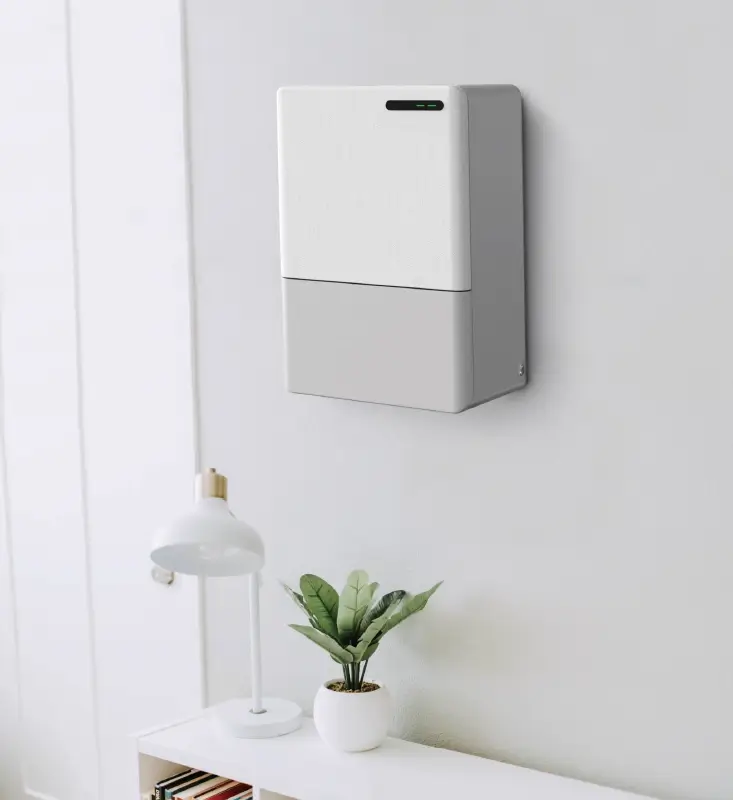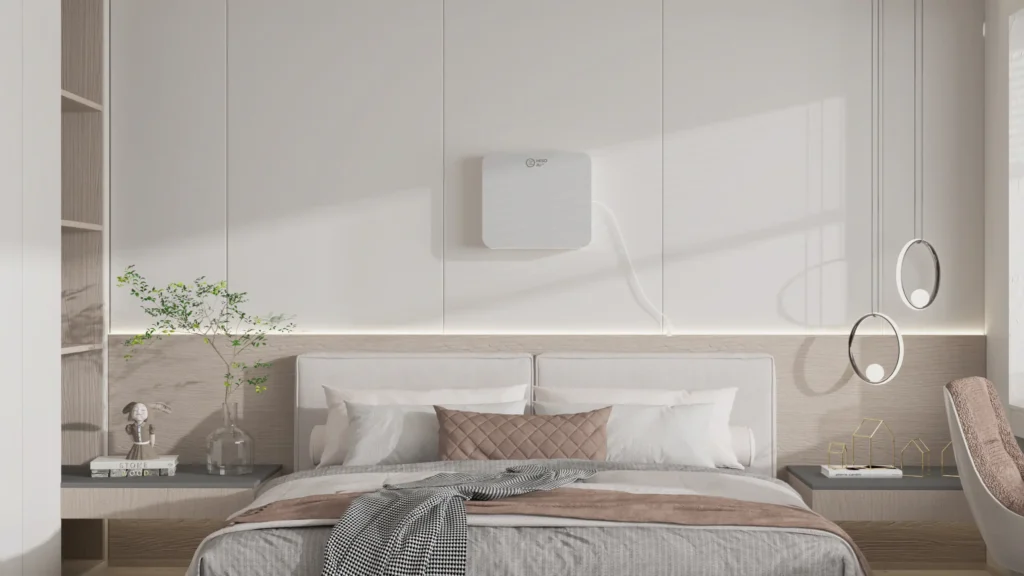
Source de l'image : moldinspectionandtest.com
Les moisissures peuvent aggraver les allergies. Puis-je tester la présence de moisissures dans l'air ? Les échantillons d'air mesurent les spores de moisissures intérieures en pompant l'air à travers un dispositif de collecte des spores de moisissures et en l'envoyant à un laboratoire. L'analyse de la qualité de l'air est l'une des procédures d'entretien les plus cruciales mais les moins fréquemment effectuées. Votre santé et celle de votre entourage peuvent souffrir d'une mauvaise qualité de l'air intérieur. Cela dit, les inspections de routine permettent d'identifier les problèmes à un stade précoce et de réduire la pollution intérieure. L'indice de qualité de l'air (IQA) est utilisé pour évaluer la qualité de l'air. Semblable à un thermomètre dont l'échelle va de 0 à 500 degrés, l'IQA mesure la qualité de l'air.
Quels sont les signes d'une exposition aux moisissures ?
Dans certains casl'avis des expertsLe mildiou et la moisissure peuvent dégager une odeur nauséabonde et rendre votre maison invivable. Lorsque ces deux champignons se développent, ils émettent des gaz odorants qui se propagent rapidement. De plus, l'exposition aux moisissures peut irriter certaines personnes. Ces personnes peuvent présenter des symptômes liés à l'exposition aux moisissures, tels qu'un écoulement nasal, une respiration sifflante, des yeux ou une peau rouges ou qui démangent. Certaines personnes peuvent avoir des réactions plus graves, comme celles qui souffrent d'asthme ou d'allergies aux moisissures.
Qu'est-ce que l'analyse de la qualité de l'air intérieur ?
Des tests pour les allergies, les moisissures et le radon sont effectués à l'intérieur. Ces tests permettent de déterminer la sécurité de l'air intérieur. Il s'agit d'une méthode comment se débarrasser d'une odeur de moisi dans un sous-sol. Un test approprié évaluera avec précision l'air de votre maison ou de votre bureau.
- Sous-sol
- Salle de bains
- Cuisine
- Chambre à coucher
Avantages des tests de qualité de l'air
Les avantages de l'évaluation de la qualité de l'air intérieur sont les suivants
- Une meilleure santé
- Augmenter le confort
- Efficacité et réduction des factures d'électricité
- Meilleure performance des employés
- Réduction des odeurs de maison et d'animaux domestiques
Un test de qualité de l'air permet-il de détecter les moisissures ?
Oui, l'échantillonnage de l'air à domicile permet de mesurer la concentration de spores de moisissures. Les échantillons d'air sont analysés au microscope. L'analyse de l'air permet de détecter les moisissures même si elles ne sont pas visibles. Les spores de moisissures, les fibres d'amiante, les substances chimiques volatiles, le pollen, la poussière et les allergies peuvent être détectés par l'analyse de l'air.
Tests de qualité de l'air pour les moisissures
La pollution de l'air intérieur peut entraîner des problèmes respiratoires, cardiaques et cancéreux. C'est pourquoi l'analyse et l'assainissement de l'air intérieur peuvent améliorer votre santé. Les principales raisons de tester les moisissures dans votre maison sont les suivantes :
- Des odeurs de moisissure ou des symptômes apparaissent.
- Identifier les espèces de moisissures présentes dans votre maison et localiser leur développement
- Mesurer la qualité de l'air intérieur en mesurant les spores
- Pour vérifier si les moisissures ont été complètement éradiquées
Que détecte un test de qualité de l'air ?
Les échantillons d'air permettent d'identifier les spores. La concentration standard de spores fongiques dans l'air est de CFU/m3. Les colonies indiquent la viabilité des spores de l'échantillon d'air. Les données du deuxième échantillon d'air permettent d'identifier les spores par genre ou espèce de champignon. La plupart des moisissures en suspension dans l'air sont :
- Penicillium
- Cladosporium et Aspergillus
- Alternaria
- Stachybotrys (moisissure noire)
- Aureobasidium
- Chaetomium
- Epicoccum
- Ulocladium
Comment un test de qualité de l'air permet-il d'identifier les moisissures ?
Un échantillonneur pompe une quantité déterminée d'air sur un instrument de collecte, généralement une boîte de Petri contenant un milieu de culture fongique. L'échantillonnage de l'air permet de mesurer les niveaux de spores de moisissures dans votre maison. Les échantillons d'air sont étudiés au microscope. L'analyse de l'air permet de détecter les moisissures même si elles sont invisibles.
Existe-t-il un appareil qui détecte les moisissures dans l'air ?
La réponse est oui, il existe un appareil capable d'évaluer la qualité de l'air, la qualité de l'air des conduits de CVC et les moisissures superficielles.
Équipement de test de la qualité de l'air pour les moisissures
Les kits de test de la qualité de l'air pour les moisissures permettent de collecter et d'analyser rapidement une variété d'aéroallergènes et de bioaérosols. La qualité de l'air intérieur comprend :
- AllergenAllergen-D Posi-Track
- Micro5 MicroCell
- Diapositives BioSis
- Diapositives AllergenAllergen MK-III.
Les kits de test des moisissures en valent-ils la peine ?
Le kit permet d'identifier les moisissures, mais ce n'est pas le meilleur test, à moins qu'une personne de votre entourage ait de l'expérience en laboratoire et sache identifier les moisissures et les spores de moisissures.
Un contrôleur de la qualité de l'air peut-il détecter les moisissures ?
Grâce à la technologie moderne, les contrôleurs de la qualité de l'air sont accessibles au plus grand nombre. Ils peuvent détecter les spores de moisissures en suspension dans l'air.
Quelle est la précision des tests de détection des moisissures dans l'air ?
Si vous sentez une odeur de moisissure, elle peut se trouver n'importe où dans la maison. Le premier test de détection des moisissures à l'intérieur est l'analyse des pièges à spores. Les tests de détection des moisissures dans l'air sont ceux qui mesurent le mieux l'exposition aux moisissures à l'intérieur. Ils indiquent les changements de qualité de l'air.
Types d'essais sur les moules
- Écouvillons - Ces tests utilisent des écouvillons en coton. Les tests sur écouvillon donnent des résultats en quelques minutes. Envoyez le tube à essai à un laboratoire pour tester d'autres produits.
- Bandes adhésives - un autre kit de test de moisissures de surface très répandu. Les utilisateurs doivent attendre l'analyse de ces tests par un laboratoire.
- Pompes à air - conçues pour tester l'air de la maison sur une table ou un comptoir. La pompe recueille l'air et les moisissures. Un laboratoire doit tester le kit après l'analyse.
- Test de la boîte de Petri - développement de moisissures avec une surface cultivée microbienne. Les boîtes de Petri moisissent rapidement, montrant les effets. Les mesures de la qualité de l'air et des moisissures sont plus précises lorsqu'elles sont envoyées à un laboratoire.
Un test de détection de moisissures dans l'air est-il vraiment efficace ?

Source de l'image : Score Hayward
Microscopic analysis is most mycology labs' "Gold Standard" and accurate. Microscopes identify genera visually.
- Test de robinetterie
- Rubans de moulage
- Pièges à spores
- Réaction en chaîne par polymérase
- Test CAP14
Test de qualité de l'air pour les moisissures : Quel est le niveau de sécurité ?
Il n'existe pas de critères relatifs aux agents biologiques basés sur la santé pour l'air intérieur. Les évaluations de la qualité de l'air des bâtiments ne doivent pas inclure d'échantillonnage des moisissures. Une concentration de spores de moisissures supérieure à 500 sp/m3 est considérée comme élevée, sur la base de certains critères de qualité de l'air. résultat du test. Toute moisissure dans un bâtiment est dangereuse. Les bâtiments commerciaux n'ont pas de niveaux de moisissures acceptables pour l'EPA, ni d'exigences en matière de croissance fongique.
Comment et quand tester la qualité de l'air dans la maison pour détecter la présence de moisissures ?
Votre maison ou votre entreprise a connu des fuites de plomberie ou des problèmes d'eau. Après que vous ou un professionnel avez éliminé les moisissures, vous souhaitez ou devez procéder à une analyse de l'air pour vérifier si les niveaux de moisissures sont redevenus normaux.
Comment savoir s'il y a des moisissures dans l'air ?
Si les moisissures se répandent dans les conduits d'air, le fait de faire fonctionner le climatiseur peut aggraver l'odeur. Les moisissures se développent dans les endroits humides. Les climatiseurs ne fonctionnent qu'occasionnellement, ce qui permet à l'humidité et aux débris de s'accumuler dans l'appareil de traitement de l'air et dans les conduits, où se développent les moisissures les plus courantes. Les moisissures sont dangereuses, que vous les trouviez ou qu'un technicien de maintenance les trouve.
7 méthodes pour tester la qualité de l'air dans votre maison
L'élimination des sources de pollution améliore la qualité de l'air intérieur. Il est important de noter la méthode qui convient le mieux à votre budget et à votre temps. Comme Les lampes de sel de l'Himalaya ne peuvent pas purifier l'air car le sel absorbe l'humidité de l'air et s'évapore, formant des spores de moisissure.
#1 Achat d'un purificateur d'air
Les filtres à air d'intérieur sont essentiels. Un système de filtrage complet élimine les polluants en suspension dans l'air dans ces purificateurs d'air. Les purificateurs d'air peuvent éliminer les allergies, les agents pathogènes, les particules et les contaminants gazeux, en fonction des filtres. En outre, le fait de pouvoir disposer de l meilleur emplacement pour un purificateur d'air dans la chambre à coucher vous permettra de rentabiliser votre achat grâce à plusieurs guides ci-dessous :
- Maintenir l'humidité de la maison en dessous de 50% toute la journée. Vérifier le taux d'humidité plusieurs fois par jour.
- Assurez la circulation de l'air dans votre maison. Utilisez des ventilateurs d'extraction pour la cuisine et la salle de bain à l'extérieur.
- Réparer les fuites du toit, des murs et de la plomberie afin d'éviter la formation de moisissures.
- Le nettoyage et le séchage des inondations doivent être effectués dans les 24 à 48 heures.
- Peindre d'abord avec des inhibiteurs de moisissures.
- Les produits antimoisissures nettoient les salles de bains.
- Remplacer les moquettes et les tissus d'ameublement saturés.
#2 Testeur de qualité de l'air pour les moisissures
Les tests de qualité de l'air permettent d'identifier les moisissures. Les moisissures visibles sont testées chimiquement. Si vous craignez que des moisissures polluent votre maison mais que vous ne pouvez pas les voir, un test de qualité de l'air peut mesurer les spores. L'amélioration de la qualité de l'air intérieur peut être bénéfique pour la santé de votre famille. Mais Les purificateurs d'air collectent-ils la poussière ?? L'identification des polluants intérieurs et le rétablissement d'un air de qualité commencent par les éléments suivants :
- Acheter un appareil de mesure de la QAI.
- Vérifier les symptômes
- Vérifier les niveaux de radon et de CO.
- Purificateur d'air
- Appelez un expert en qualité de l'air.
Tests de qualité de l'air pour les moisissures : En résumé
Un test de qualité de l'air certifiera le succès de votre projet d'élimination des moisissures. Vous savez déjà quel test de moisissure est le plus approprié pour vous et combien de temps il vous faudra pour obtenir les résultats du laboratoire. Si des problèmes persistent, vous pouvez demander l'aide de fabricant de purificateurs d'air comme hisoair puisqu'il s'agit d'un expert pour vous aider.







